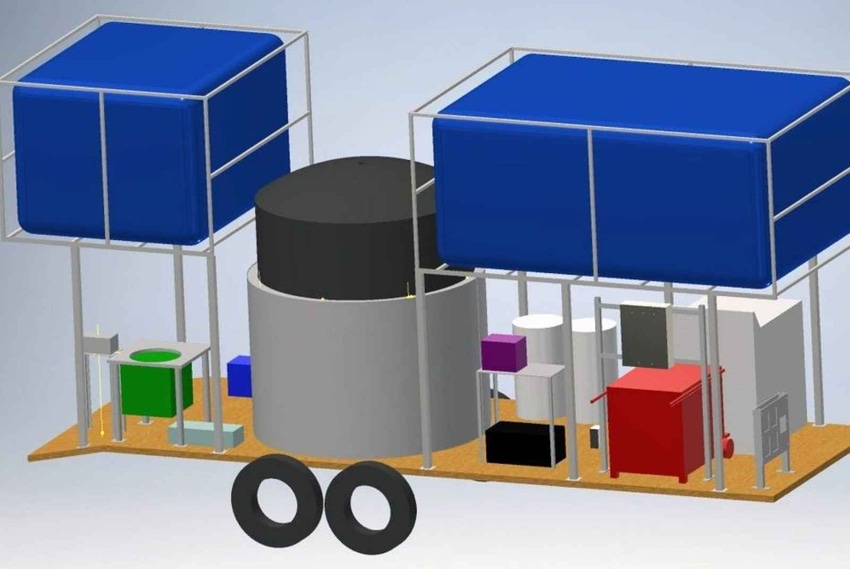Virginia Tech engineering students design generator that converts leftover food waste to produce enough electricity to power a typical home.
May 3, 2017

Mechanical, civil and environmental engineering students at Virginia Tech are converting leftover food waste to produce electricity through a biogas generator as part of a senior design capstone project.
The students use waste from a campus dining hall to fuel the generator that produces enough electricity to power a typical home. As a target, the team set out to design and build a generator that would generate 1 kW of power with a methane content of 50%. The end result generates nearly 5 kW with a methane content of more than 60%.
“When used at scale, a process like this does several things,” said Steven Cox, an adviser to the team and president of GkW Energy, which sponsored the team. “First, it reduces the amount of product going into landfills, which the university pays for by the pound. Second, it means we aren’t shipping that product 75 miles and then returning 75 miles with compost, so it saves more money and lowers our carbon footprint by limiting mileage in large trucks.”
The sustainable machine uses methane instead of gasoline and weighs more than 6,000 lb. The generator is positioned on a 22 ft.-long flatbed trailer with a 1,000 gal. anaerobic reactor and has two flexible gas holders that gather methane gas.
"Seed" fluid from an operating industrial anaerobic reactor works to jump-start the reactor. The fluid contains anaerobic bacteria that break down or digest food waste to create methane, which is captured and stored in gas holders on a frame mounted to the trailer. The methane is then used to power an electric generator. A series of standard electrical outlets is mounted on the trailer for demonstration purposes and includes standard 120-volt outlets, as well as a 240-volt outlet used to run heavier appliances such as clothes dryers.
By using methane generated from the waste, the small power plant produces enough electricity to run several homes.
The relatively small system can be scaled up for use on small farms or other facilities where a significant amount of food or organic waste is generated, the team said. As a side benefit, the nutrient-rich product created by the system can be taken from the reactor and used as fertilizer that can be applied to crops and gardens without the odor normally associated with non-neutralized liquid manures.
The team of eight mechanical engineering and one civil engineering seniors spent a semester designing a system that would meet the conditions of the Commonwealth Research Commercialization Fund set forth by GkW Energy.
Besides Cox, a research associate in the Charles E. Via Jr. department of civil and environmental engineering, the team is also advised by Robin Ott, associate professor of practice in mechanical engineering, and Clara Eichler, research associate of civil and environmental engineering.
You May Also Like



